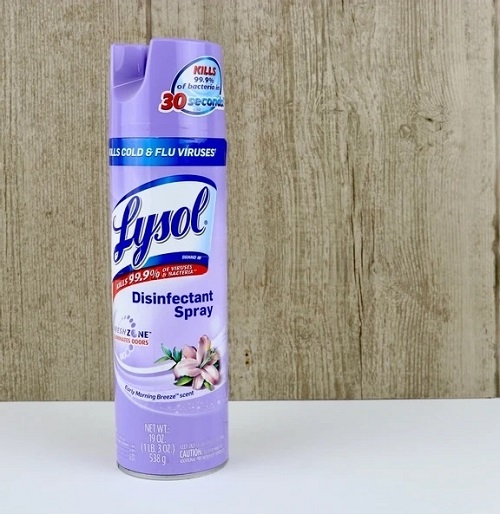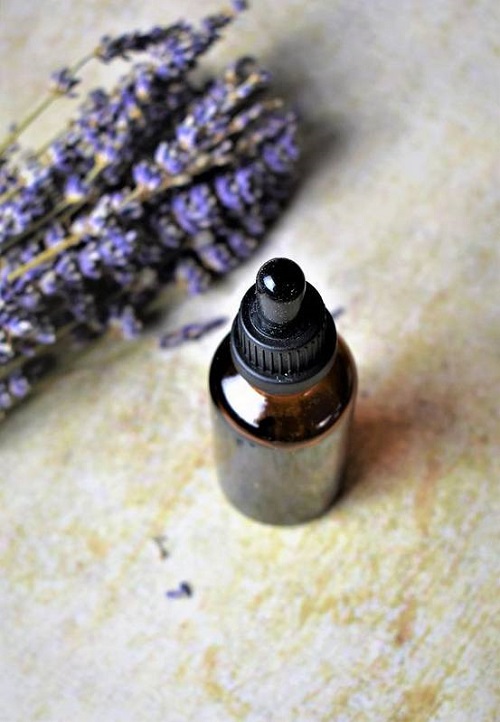Lysol is an excellent germ killer, but Does Lysol Kill Bed Bugs too? Clear your doubts in this comprehensive guide!
Dealing with bed bugs is a frustrating and overwhelming experience. These tiny insects multiply quickly and can survive in various environments. When faced with a bed bug infestation, it’s natural to wonder if common household products like Lysol can offer a viable solution. In this article, you’ll find out, Does Lysol kill Bed Bugs and more.
What is Lysol?

Lysol is a brand of cleaning and disinfecting products that have been around for over a century. The brand is owned by Reckitt Benckiser, a British multinational consumer goods company. These products are known for killing germs and are widely used in both residential and commercial settings. The product line includes disinfectant sprays, multi-surface cleaners, bathroom cleaners, laundry sanitizers, and hand soaps.
Does Lysol Kill Bed Bugs?
Does Lysol Kill Bed Bugs? Yes, Lysol can kill bed bugs. However, this remedy works when bed bugs get doused with Lysol. These creatures are notoriously good at hiding in hard-to-reach areas, like the crevices of mattresses, seams of furniture, and other small spaces. That’s why Lysol is not a practical and efficient solution against these blood-sucking insects.
Will Lysol Kill Bed Bug Eggs?
While Lysol can kill bed bugs on contact, it’s not effective against bed bug eggs. The eggs are resilient and have a protective layer that shields them from many common pesticides and disinfectants, including Lysol.
Signs of Bed Bugs Infestation
Bed bug infestations can be difficult to identify, but there are several signs you can look for:
- Presence of live, crawling bed bugs on walls, bed, and furniture.
- One of the best ways to catch these pests red-handed is by looking out for their dark fecal spots. These tiny dots are often found on mattresses, furniture, and walls.
- As bed bugs grow, they shed their translucent exoskeletons. Look out for those as a potential sign of a developing infestation.
- A heavily infested room carries a musty smell. This scent is a distinct indication of a bed bug problem.
- Eggshells and dead bodies of bed bugs are telltale signs of an infestation.
Other Ways to Eliminate Bed Bugs
1. Vinegar – Besides being a popular household staple, vinegar is an excellent means to eradicate bed bugs because of its mild acidity. Check out this remedy and say goodbye to the pesky bed bugs.
2. Food Grade Diatomaceous Earth (DE) – According to this research, diatomaceous earth dehydrates bed bugs’ exoskeleton, causing death upon physical contact. For this hack, spread enough diatomaceous earth over the holes, cracks, gaps, and other hiding places.
3. Oregano Essential Oil – This study proves that oregano essential oil is the perfect bed bug repellent. Combine 10-15 drops of oregano oil and 1/2 cup of water in an empty spray bottle. After that, spritz this mix all over the problematic furniture, clothes, and bedding.
4. Washing and Drying – If you want to treat bed bugs infested clothes, laundering is the ideal solution. For detailed instructions, hop to this helpful article.
5. Lavender Oil – Keep bed bugs far away from your living space by using the potent lavender oil. It works because of its strong scent that bed bugs hate the most. Read the details here.
Safety Precautions to Consider
When using these alternative methods to eliminate bed bugs, it is important to take certain safety precautions to protect yourself and others. Here are some safety guidelines to follow:
- Ventilation: Ensure proper ventilation where you are using these remedies. Open windows or use fans to maintain fresh air circulation. This will help prevent the buildup of fumes or strong odors.
- Protective Gear: Consider wearing gloves, goggles, and a mask when handling and applying these substances. Some individuals may be sensitive to certain products, and that’s why protective gears are a must.
- Test on Small Areas: Before applying any of these remedies to large surfaces or fabrics, test them on a small, inconspicuous area. This will help you ensure that there are no adverse reactions or damages to the material.
- Keep Out of Reach of Children and Pets: Store these substances in a secure location out of the reach of kids and pets. Some products, such as essential oils, can be toxic if ingested or applied improperly.
- Dispose of Waste Properly: If you have leftover or unused products, follow the appropriate disposal methods as per local regulations. Do not pour substances down the drain or discard them inappropriately.
- Avoid Overuse or Excessive Application: When using alternative methods such as vinegar, diatomaceous earth, or essential oils, avoid excessive application. Using more than recommended does not necessarily increase effectiveness and may create unnecessary exposure risks.
- Keep Food and Eating Utensils Away: When using any remedies, ensure that food, utensils, and cooking surfaces are protected. This will prevent contamination and accidental ingestion.
- Monitor for Adverse Reactions: While using any treatment methods, closely monitor yourself and others for any adverse reactions, such as allergic symptoms, respiratory distress, or skin irritation. Discontinue use and seek medical attention if any such reactions occur.
How to Prevent Bed Bugs in an Apartment?
Bed bugs can be a serious problem in any living space. Here are some tips on how to prevent bed bugs infestation in your apartment:
- Be vigilant while traveling – When traveling, inspect the hotel room for signs of bed bugs before settling in. Check the mattress, headboard, and luggage rack carefully. Keep your suitcase off the floor and bed. When you return home, wash and dry all your clothes – even those you didn’t wear – on the highest possible heat setting.
- Inspect used furniture – Bed bugs can hitch a ride on used items. Always check any furniture you buy for signs of bed bugs before bringing it into your apartment. Signs include small brown spots, shed skins, or live bugs.
- Seal cracks and crevices – Bed bugs can enter your home through cracks in walls and ceilings. Seal any cracks or crevices around baseboards, light sockets, etc., to eliminate these entry points.
- Maintain cleanliness – Regularly vacuum and clean your apartment, especially the bedroom area.
- Regular Inspections – Regularly inspect your living spaces, particularly the bedroom and anywhere you or your pets sleep. Check for signs of bed bugs: blood spots on bedding, bed bug skin or shells, and bed bug feces (tiny black dots). These pests are about the size of an apple seed and often hide in mattress seams, bed frames, and headboards.
- Cover Power Outlets – In multi-unit buildings, bed bugs can travel through electrical sockets. Consider using safety plugs or outlet covers to minimize this risk.
- Use Mattress and Box Spring Encasements – These covers can prevent bed bugs from infesting your mattress and box spring. They also make it easier to spot live bed bugs.
- Exercise Caution with Shared Laundry Facilities – When using these facilities, carry your clothes in plastic bags and promptly place them back in a clean bag after drying.
- Inspect Your Workplace – Like other public spaces, workplaces can also be hotspots for bed bugs. Make sure to keep your belongings separated from others if possible. Also, regularly inspect the sitting area and where you often place your things.
- Try Door Sweeps – Install door sweeps to halt their movements from one room to another.
When to Contact a Pest Control Professional?
Contacting a pest control professional is highly recommended in these conditions:
- If the bed bug infestation has spread to multiple rooms or areas of your home, it is recommended to seek professional help.
- When the DIY treatments are unsuccessful against bed bugs.
- Bed bug bites can cause itching, discomfort, and potential allergic reactions in some individuals. If you or anyone in your household is experiencing severe allergic reactions, it’s important to seek professional assistance.
Does Lysol Kill Bed Bugs: FAQs
1. How Do You Get Bed Bugs In The First Place?
Bed bugs can enter your home through various means. Common sources include infested furniture, such as used beds, couches, or chairs. They can also be picked up from infested hotels, motels, or public transportation. Bed bugs are excellent hitchhikers and can latch onto luggage, clothing, or personal belongings. They can spread through close contact with infested individuals or their belongings. Additionally, bed bugs can move between adjacent apartments or homes through cracks, crevices, or shared ventilation systems. Be cautious when traveling, inspect second-hand furniture, and take preventive measures to minimize the risk of bringing bed bugs into your home.
2. Can You See Bed Bugs With the Naked Eye?
Yes, bed bugs are visible to the naked eye. Adult bed bugs are about the size of an apple seed with a flat, oval-shaped body. However, their small size and ability to hide in crevices can make detection challenging. By carefully inspecting areas where bed bugs may hide, such as mattresses, furniture, and cracks in walls or floors, it’s possible to identify these pests with the naked eye.
3. Can Bed Bugs Live In Carpet?
While they are commonly associated with beds and mattresses, bed bugs can infest carpets as well. Their small and flattened bodies allow them to hide in cracks, crevices, and fibers of carpets. Bed bugs can lay eggs in carpeting, making it their personal breeding ground. Vacuuming alone may not eliminate a carpet infestation, as bed bugs can cling tightly to fibers. Either try the above remedies or contact a professional.
4. How to Dispose of Bed Bug Infested Items?
When disposing of bed bug-infested items, it’s crucial to prevent further infestation. Encase items in plastic bags and seal them securely. Large items like mattresses can be covered with bed bug-proof encasements before disposal. Don’t leave infested items unattended outside, as it can lead to the bugs spreading. Dispose of sealed items properly in a dumpster or large trash bin. If possible, label the disposed items as “Bed Bug Infested” to prevent others from unwittingly taking them.
5. How Long Does It Take Bed Bugs To Infest?
Bed bug infestations can develop relatively quickly. When introduced into a new environment, bed bugs immediately start feeding and breeding if conditions are suitable. Over time, they gradually spread from their initial hiding spots to other areas, often unnoticed until signs like bite symptoms, stains, or actual bug sightings become apparent. The growth and spread of a bed bug infestation can be influenced by factors such as the proximity of hosts and ambient conditions.



